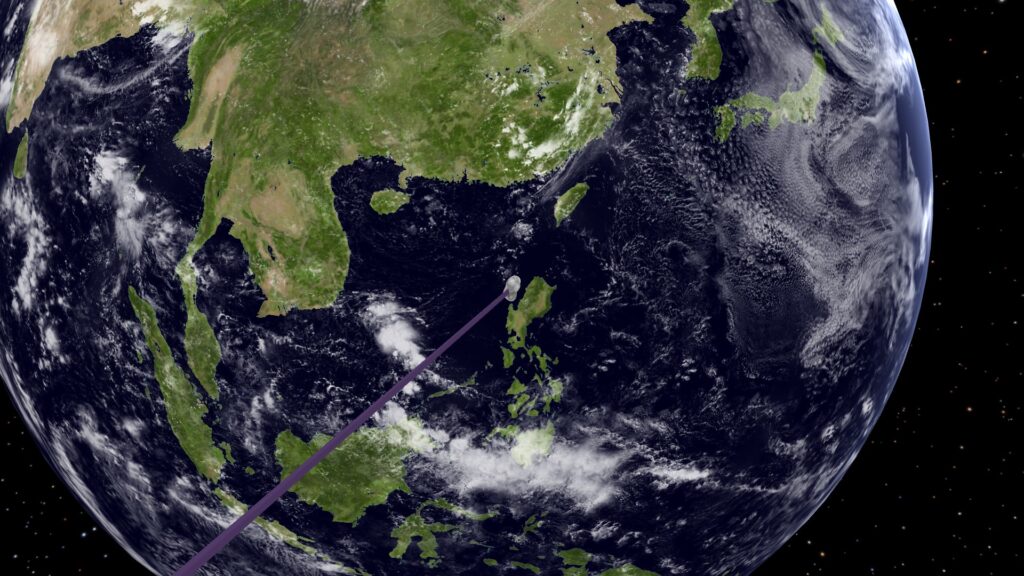The video shows the motion of the Earth–Moon system barycenter around the Sun and the rotation of the Earth and Moon relative to it. The phenomenon of precession of the lunar orbit is also clearly shown.
Just a few centuries ago, it was believed that the Earth was stationary, and the Sun and planets revolved around it. Now we know that it is the planets that move around the Sun. It is usually said about our planet that the Moon revolves around it, and the Earth itself moves around the Sun. However, it is more correct to say that the center of mass of the Earth–Moon system moves around the Sun, while both the Earth and the Moon rotate around their common barycenter.
The video shows how our planet, in the process of moving around the Sun, fluctuates relative to the common center of mass with the Moon. The period of the Earth’s oscillations around this barycenter coincides with the period of the Moon’s rotation around it and is 27.3 days. While you are ‘motionless’ reading this text, you are actually moving around the Sun on a very complex trajectory. Being on the surface of the Earth, you make a revolution around its axis in one day. At the same time, you oscillate relative to the Earth–Moon barycenter in about one month and make a revolution around the Sun in one year. The barycenter is located inside the Earth, that is, the oscillation radius is slightly smaller than the radius of the planet itself. At the same time, the Moon moves around the barycenter along a similar trajectory. But this trajectory is mirrored and larger in size by as many times as the mass of the Earth is greater than the mass of the Moon.
The video also clearly shows the phenomenon of precession of the Moon’s orbit. Precession consists in the slow rotation of the ellipse of the lunar orbit in space over 8 years and 10 months. The plane of the Moon’s orbit also rotates and makes a complete revolution in about 18 years and 7 months. Lunar precession occurs primarily due to the fact that the Moon, in addition to the gravity of the Earth, is affected by the gravity of the Sun. Moreover, the gravity of the Sun acting on the Moon is more than twice that of the Earth. In addition to the Sun, the shapes of the Earth and Moon, other than spherical, also contribute to the precession of the lunar orbit. The precession of the lunar orbit explains the cyclical nature of solar eclipses. At the same time, the Moon is gradually moving away from the Earth by about 3.8 meters per century. This will lead to the fact that in about 750 million years it will become impossible to observe total solar eclipses from the surface of our planet…
Throughout part of this video, the sizes of the Earth, other planets, the Sun and the Moon are shown to be greatly exaggerated compared to the distances between the bodies. The speed of rotation of the Earth around its axis is shown to be significantly reduced compared to the speed of motion of celestial bodies in their orbits.
Modeling and rendering were performed by author of this publication using own software. The calculations took into account the mutual influence of the Sun, all the planets of the Solar System and the Moon. Relativistic effects were also taken into account in the calculation.
The track No Way Out by Philipp Weigl sounds in this video. This track was not changed. Attribution 4.0 International license.





